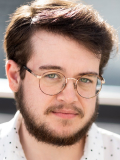If you or a loved one are in crisis, please call the National Suicide Prevention Lifeline at 1-800-273-TALK (8255), or contact the Crisis Text Line by texting TALK to 74174.
Fifty-two percent of LGBTQ+ kids in middle school and high school say they were bullied in person or online last year, according to data collected by the Trevor Project as part of its third annual survey.
While LGBTQ+ youths have long been bullied more than their cisgender and heterosexual peers, experts and advocates told The 19th that one of the biggest red flags is that schools have still not taken enough action to stop the deluge. As little is done, research shows that some of the most vulnerable students — transgender, Native and Indigenous kids — bear grave consequences of inaction from the adults in teens’ lives.
“It’s not like we’re helpless,” said Ryan Watson, an associate professor at the University of Connecticut who has researched the experiences and health risks facing LGBTQ+ teenagers. “We have quite a few strategies we can pull from … yet, schools are still resistant.”
Schools should enforce enumerated anti-bullying policies, which spell out that bullying based on race, sexual orientation, gender identity and other characteristics won’t be tolerated, and create safe spaces like Gay-Straight Alliances to signal to students that they belong, three researchers told The 19th.
Gay, Lesbian and Straight Education Network (GLSEN)’s latest school climate survey found that only 13 percent of students — out of over 16,000 from all 50 states — said their school had an enumerated anti-bullying policy.
Despite that lack of policy, the organization’s research still shows that many teachers have made an effort to create affirming spaces — which is another key to prevent bullying — despite some fearing backlash from parents or school administrations.
LGBTQ+ students at affirming schools were 30 percent less likely to be bullied, the Trevor Project found, underlining the power that educators have if they create welcoming spaces for kids.
In contrast, schools ordering teachers to remove Pride flags may be enabling more bullying, since removing the flag removes an important signal that the space is LGBTQ+-affirming, said Amy Green, vice president of research at the Trevor Project.
Ethan Mereish, an associate professor of health studies at American University, pointed out that physical signals like flags are extra important when teachers don’t have time for direct conversations with their LGBTQ+ students to show that they are in a safe environment.
“Removing the flag is different than never raising it. … It is a clear expression of lack of support,” said Diego Sanchez, director of advocacy at PFLAG National.
To have the largest impact when tackling the bullying of LGBTQ+ kids, changing school policies is the best place to start — even if not all bullying is happening at school, Green said.
“School is where they spend the majority of their waking hours,” she said. “It’s not out with their friends, it’s not even in their home.”
Addressing the broader cultural attitudes that allow for such widespread bullying to take place is also crucial to fixing the problem long-term, said David Kinitz, a PhD candidate at the University of Toronto who studies LGBTQ+ mental health.
“Why does bullying happen in the first place?” he asked. It’s because many children still learn, directly or indirectly, that “these genders and sexual orientations are not acceptable. We need to change the social attitudes, rather than just address bullying,” he said.
Making a school more LGBTQ+-affirming can also be a slow process, especially if there are no previously existing Gay-Straight Alliances or protective policies in place.
“Putting a school policy in today … it’s a great start to start changing the climate. But sometimes, things might not change overnight,” Watson said.
Research shows that the consequences of schools not acting are severe.
The Trevor Project found that LGBTQ+ students who reported being bullied were three times as likely to attempt suicide compared with LGBTQ+ students who were not bullied. Transgender and nonbinary youth, who are more likely to struggle with anxiety and depression and are at a higher risk of being victims of violence than their peers, attempted suicide at even greater numbers.
Thirty-two percent of trans and nonbinary youth who were bullied told the Trevor Project that they tried to kill themselves, compared with 19 percent of cisgender LGBTQ+ kids who were bullied.
Trauma associated with bullying in adolescence can often persist into adulthood, creating a well of shame that has to be unearthed later in order to heal.
Mereish, who works as a licensed psychologist, said that unpacking that childhood trauma has been necessary for some of his adult LGBTQ+ clients.
“We’re unpacking the pain, the trauma, the shame that resulted during adolescence as a result of bullying, or stigma and other forms of oppression,” he said. They “carry those narratives and trauma with them into adulthood.”
Transgender and nonbinary students, plus Native and Indigenous students, faced some of the highest risks of being bullied in the Trevor Project’s survey — at school, at work and at parties. Those students’ greater risk of being targeted is coupled with being part of marginalized groups that experience high rates of suicide and mental health issues, largely attributed to discrimination and poverty.
Year over year, LGBTQ+ Native and Indigenous youth in Trevor Project polling are consistently at the highest risk for reported suicide attempts in the past year, Green said, adding: “It’s the hardest data for me.”
A 2020 study by GLSEN and the Center for Native American Youth found that 78 percent of surveyed LGBTQ+ Native and Indigenous youth were harassed or assaulted at school due to their sexual orientation.
In turn, experiencing that discrimination made the students about twice as likely to skip school because they felt unsafe, the study found. They also reported greater levels of depression.
As educators and policymakers tackle bullying against LGBTQ+ kids of color, they should understand that students’ experiences may not be easily labeled as one kind of discrimination, Sanchez said.
“I grew up in the South in rural Augusta, Georgia, as a dark person, and I’m trans,” he said. “It was hard to distinguish what was maltreatment relative to race and relative to being LGBTQ+.”
Trans and nonbinary youth are also reporting high rates of bullying during a year in which advocates have repeatedly raised alarms that state legislators’ efforts to bar them from sports that match their gender identiy — and efforts to criminalize gender-affirming care — could cause trans kids to internalize negative feelings about themselves or expose them to more harassment.
Victoria Kirby York, deputy executive director of the National Black Justice Coalition, said rhetoric spread by lawmakers about trans people during the legislative battles can amplify the discrimination and bullying experienced at school.
“When you hear these messages from state legislators and decision makers, it doubles down on the experiences they’re having at school,” Kirby York said.
Research on potential mental and emotional consequences of the legislation is sparse. However, trans and nonbinary youth in Texas, which has introduced the most anti-trans bills in the country, told the Trevor Project in crisis calls this year that they are feeling stressed, using self-harm or considering suicide due to anti-LGBTQ laws being debated in the state.
“Parents of trans and nonbinary kids have to be protecting them everywhere,” Sanchez said. PFLAG breaks down steps that parents who want to report bullying and harassment with the Office for Civil Rights can take and offers contact information for advocates who can help the process.
Teachers, administration and staff at schools have the ability to address LGBTQ+ bullying in their schools now, Green said.
“They can create an environment that is safe and welcoming. Or they can allow an environment that is harmful and hostile to take place,” she said.
The Trevor Project surveyed 34,759 LGBTQ youth ages 13-24 online from October 12 to December 31, 2020. Respondents were recruited through social media ads.
Correction: An earlier version of this article misstated Amy Green's title at the Trevor Project. She is the vice president of research, not director of research.







